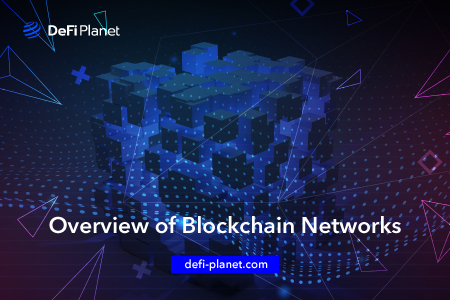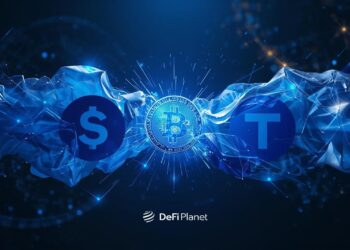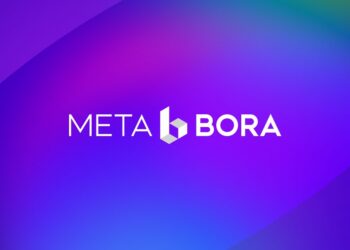Last updated on July 9th, 2023 at 07:05 pm
Solana
Solana is a new generation blockchain designed to solve the issues identified on Ethereum. It, like other networks that emerged after the creation of Ethereum, seeks to solve the blockchain trilemma, without compromising an important element for others. Ethereum 1.0, a Proof of Work network, achieved security and decentralization but fell short on scalability. As the activities on the network continued to increase, its underlying architecture remained the same. This degenerated in congestion, increase in gas fees, slower transaction speed, and gas wars. Though Ethereum is making plans to move to a Proof of Stake consensus mechanism, existing blockchain solutions like Solana are gaining a market share in the aspect of scalability.
Features of Solana
Solana is a Proof of History network that has smart contract features, allowing developers to create decentralized apps, decentralized finance protocols, NFT platforms, DAOs, and much more. Theoretically, the network aims to solve the issues noticed in its forerunner, Ethereum, with fast transaction speed, quick block times, and low transaction fees. According to Solana, its “scalability ensures transactions remain less than $0.01 for both developers and users”,
“Solana is all about speed, with 400 millisecond block times. And as hardware gets faster, so does the network.”
As the NFT ecosystem expands, the Ethereum network has become increasingly congested, resulting in a phenomenon known as ‘gas wars’.
History Of Solana
Anatoly Yakovenko founded Solana in 2017, where he stated his intention about the Network’s consensus mechanism, which is Proof of History. In a whitepaper, he detailed the idea behind PoH, which removed the scalability issues that blockchains faced when their user activities increased.
Solana’s Architecture
Solana’s consensus mechanism is Proof of History– PoH, which is a sequence of computations that shows that event happened during a period on the blockchain. The network runs as a hybrid of Solana’s unique PoH and Proof of Stake. The PoS mechanism allows token holders to delegate tokens to validators to protect the network and earn revenue.
It is different from PoW, where miners have to compete with one another using high computation power to solve an advanced mathematical cryptographic puzzle. In the case of PoS, validators verify the transactions. Usually, the network chooses Validators based on some criteria like the size of their staking pool, the length of their staking period, etc.
The PoH system must ensure that transactions are being verified in the right order. Solana is designed to work in time slots, where validators are chosen ahead of time to verify transactions and create blocks. This saves time and ensures that the network remains scalable. Proof of History is a high-frequency Verifiable Delay Function that monitors the network to maintain order. This is done by proving validators have spent the right amount of time, allowing the network to operate smoothly.
Utility of Solana
Solana is useful to developers and average users alike. Developers can build their decentralized apps, decentralized finance protocols, and NFT ecosystem on a highly scalable, decentralized, and secure network. Solana has quality resources for developers such as “get started guide, videos, tutorials, SDKs, and reference implementations” among others.
Challenges
Solana is an innovative network, but it has constraints that must be addressed for it to function effectively.
• Centralization
According to a school of thought, Solana is not as decentralized as expected of an open-source blockchain network. Core node development in the network is handled by Solana Foundation, opening up centralized tendencies. When this is compared to Ethereum, it is pale because the latter is littered with multiple core node developers such as Besu, Nevermind, Go Ethereum, and so on.
• Network issues
History has shown cases of the network breaking down for different reasons. It went offline for a period. In 2021, Solana broke down when different platforms on the network held their Token Generation Events. For example, users noticed network downtime during the TGE of SolChicks.
Algorand
Algorand belongs to the clique of newer blockchains that are vying to solve Ethereum’s issues and improve the use cases of cryptocurrencies, NFTs, DeFi protocols, DAOs, CBDCs, and much more. A core aspect of this network is to offer a highly scalable network. As a smart contract-compatible blockchain, Algorand allows users to create smart contracts, decentralized apps, and tokens for different aspects.
Algorand has partnered with private individuals, venture capitalist firms, developers, governments, and other leaders in the blockchain space.
History of Algorand
Algorand was officially launched in 2019 and founded by Silvio Micali, a Massachusetts Institute of Technology (MIT) professor, and computer scientist. Micali is an established academic that developed the concept behind the network. In 2012, Micali received the Turing Award for his collaboration with Shafi Goldwasser and overall contributions to computer science.
Algorand’s Architecture
Algorand uses Pure Proof of Stake as its consensus mechanism, which is built on the Byzantine agreement. The mechanism allows decentralization, scalability, full participation, and security on the platform.
Validators are chosen based on the number of native tokens they staked, and the selection process is anonymized for both the block proposers and block proposal voters. The more their stakes, the higher their chances of being chosen by the network.
Utility of Algorand
Algorand blockchain is used by developers to create different types of decentralized apps that function with cryptocurrency.
The open-source network is used by governments to build their CBDCs. One of the countries effectively developing their digital currency on Algorand is the Marshall Islands.
“Algorand was selected to power the first national digital currency, known as the SOV, which will circulate alongside the US dollar and help the Marshall Islands efficiently operate in the global economy.”
Algorand is also used in creating blockchain solutions for “entertainment, infrastructure, securities, supply chain, identity, stablecoins, insurance, environmental, gaming, Defi, financial institutions, and digital assets.”
Challenges
The adoption of Algorand is slower than expected. Though this network is well-known, it is not as widely utilized as its counterparts such as Solana. Projects are actively building on other blockchains and releasing their innovations. Algorand has a lot more to do to convince the average development team to pitch their tents with them.
Fantom
Fantom is a decentralized network built as an alternative to Ethereum and it offers permissionless, security, and scalable elements. It is a smart contract ecosystem designed to host decentralized apps and varying tokens. As with other blockchains stated above, Fantom attempts to solve the blockchain trilemma. Its mainnet was officially launched in December 2019.
The consensus mechanism of Fantom is the Asynchronous Byzantine Fault Tolerant (aBFT) linked Proof-of-Stake system, allowing the network to function effectively.
History of Fantom
Fantom was founded by a South Korean computer scientist, Dr. Ahn Byung lk. The testnet was launched in 2018, and its mainnet became available a year later. Fantom Foundation currently oversees the development and management of the network. It consists of experts from different fields and is headed by its CEO, Michael Kong.
Fantom’s Architecture
Fantom works with the Lachesis mechanism, a unique “leaderless” PoS consensus system, allowing fast transaction speed and security.
It is an aBFT consensus mechanism that offers near-instant finality and allows the network to operate efficiently even if up to one-third of validators engage in malicious activity.
This is possible because of its Byzantine Fault-Tolerant feature. As an asynchronous network, it allows participants to “process commands at different times.” According to Fantom, transaction speed is set at one to two seconds.
Utility of Fantom
As a blockchain with smart contract features, developers can program their decentralized apps. The smart contracts are coded by the developers and contain the tenets of the different decentralized apps built on them. Like other networks on this list, Fantom supports decentralized apps, DeFi protocols, NFT projects, DAOs, and many more.
Challenges
Fantom is a smart contract network that is popular among many because it attempts to solve the blockchain trilemma, however, it is not without limitations. For instance, the blockchain is one of the many that are currently trying to solve the issues that Ethereum faces. It is in fierce competition with other networks like Ethereum, Cardano, Algorand, Solana, Avalanche, etc.
The scalability challenges evident on Ethereum drive the core objective of every new generation network. For Fantom to stand out, it has to offer unique elements that will attract developers to use its smart contract functionalities to build their decentralized apps.
In Conclusion,
- Almost every new generation blockchain is attempting to solve Ethereum’s scalability issues.
- Every network in this article from Solana, through Algorand to Fantom is creating innovations to handle the blockchain trilemma.
- Solana, Algorand, and Fantom all use a variant of the Proof of Stake consensus mechanism, tailored to their individual needs.
- Developers are starting to see the need to use this feature.
- They have a similarity. They are yet to grow to the stage of Ethereum in practicality to see if their theoretical concept of scalability will stand the test of time.
- With the fierce competition they face, they must stay on top of the game.
If you want to read more articles like this, follow DeFi Planet on Twitter, Facebook and LinkedIn.





















